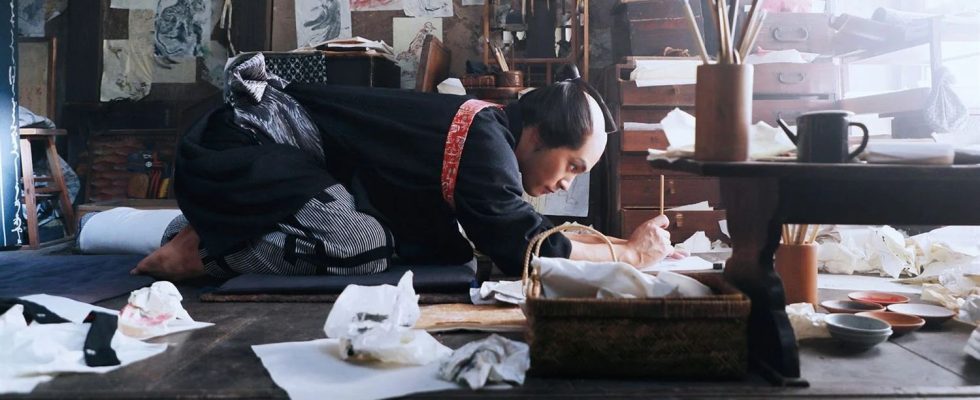If we are familiar with his famous waves and his views of Mount Fuji, or his powdered geishas in kimono, the viewer will discover the vicissitudes that Hokusai went through with censorship and his competitors.
After a Caravaggio Little memorable by Michele Placido, Hajime Hashimoto’s biopic retraces the journey of the famous Japanese print painter Hokusai, with more happiness. His Thirty-six Views of Mount Fuji (1831 – 1833) and The Great Wave off Kanagawa (1831) have been reproduced millions of times. We understand less today the reprobations that his art provoked in the Japanese capital of Edo when he established himself as a major artist. For the knowledge, Hokusai hits theaters Wednesday, April 26.
flat film
At the beginning of the 18th century in the capital of Edo in Japan, the emperor imposed drastic censorship on artists. A student painter, Shunrô was expelled from his school for his impetuosity and his marginal style. Supported by a gallery owner who detects his genius, Shunrô will become Hokusaï, one of the most famous painters of Japanese prints, but also the target to be shot down by his detractors.
Hajime Hashimoto opts for a non-chronological biopic, passing from the refractory student in his thankless school, to the accomplished old man, then returning to the adult, without forgetting the assassination attempt of which he was the victim. The imagery refers to Hokusai’s style in the very composed frames of the shots, their impression of flatness and the predilection given to faces. A beautiful identification effect that feels to the eye, without ostentation, but accomplished.
Exploded composition
Coming from the landscape school of the “floating world”, Hokusaï moved towards the portraits of actors and courtesans. His masters and competing artists were critical of the galvanizing of the two dimensions of his compositions. Ahead of its time, that’s all the modernity of Hokusai. She will expatriate herself in impressionism, fauvism and geometric abstraction, influencing all of Western culture.
Hajime Hashimoto chooses for his film a construction reminiscent of that of bird, the biopic of Charlie Parker by Clint Eastwood, passing from one era and one episode to another without transition. They emerge from reminiscences, an event, a landscape, or a face that evoke memories. That of the gallery ransacked by the police, of the censorship of his writings – Hokusaï also being a writer -, or that of a geisha. Filmed as in a “floating world”, Hokusai lifts the veil on an artist among the most popular, but still mysterious for more than one.

The sheet
Director: Hajime Hashimoto
Actors: Yuya Yagira, Min Tanaka, Hiroshi Abe
Country : Japan
Duration : 1h30
Exit : April 26 2023
Distributer : Art House
